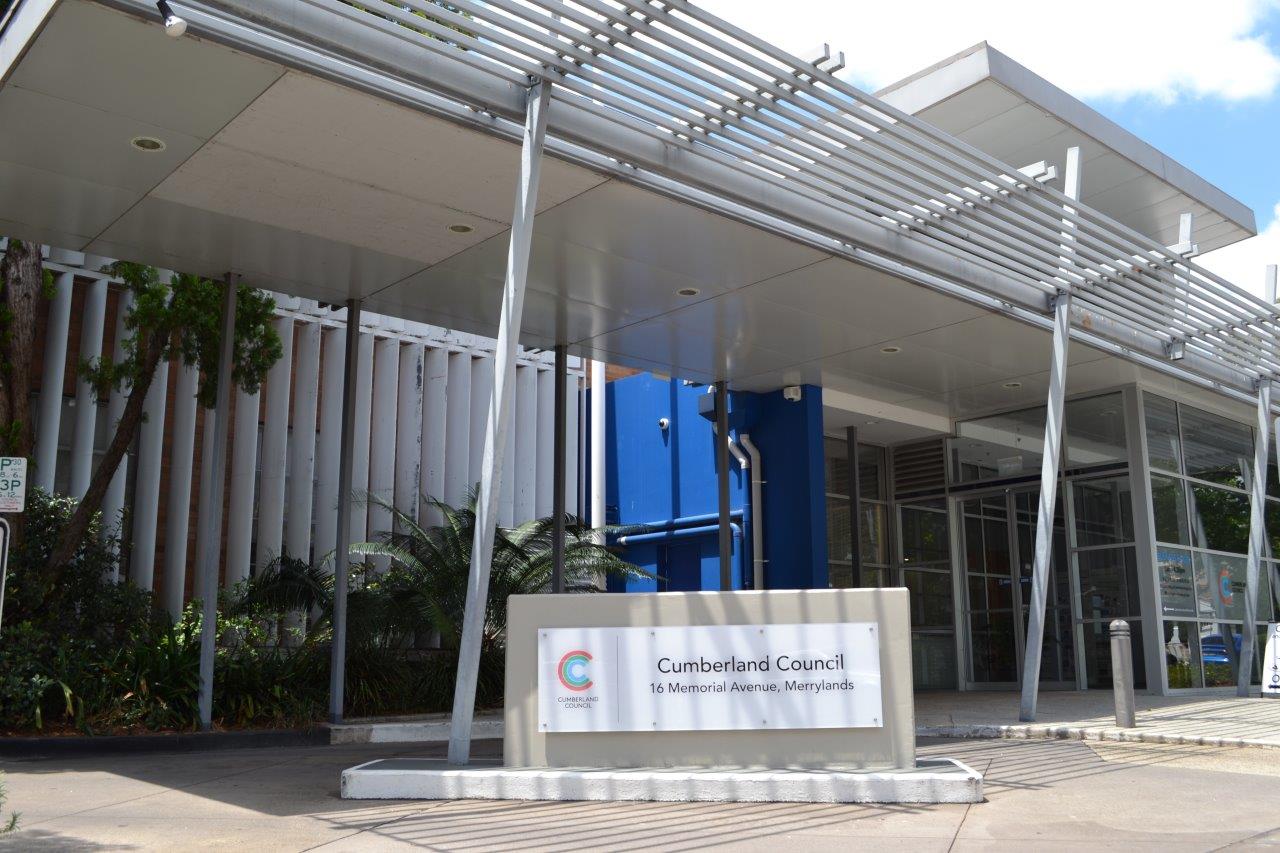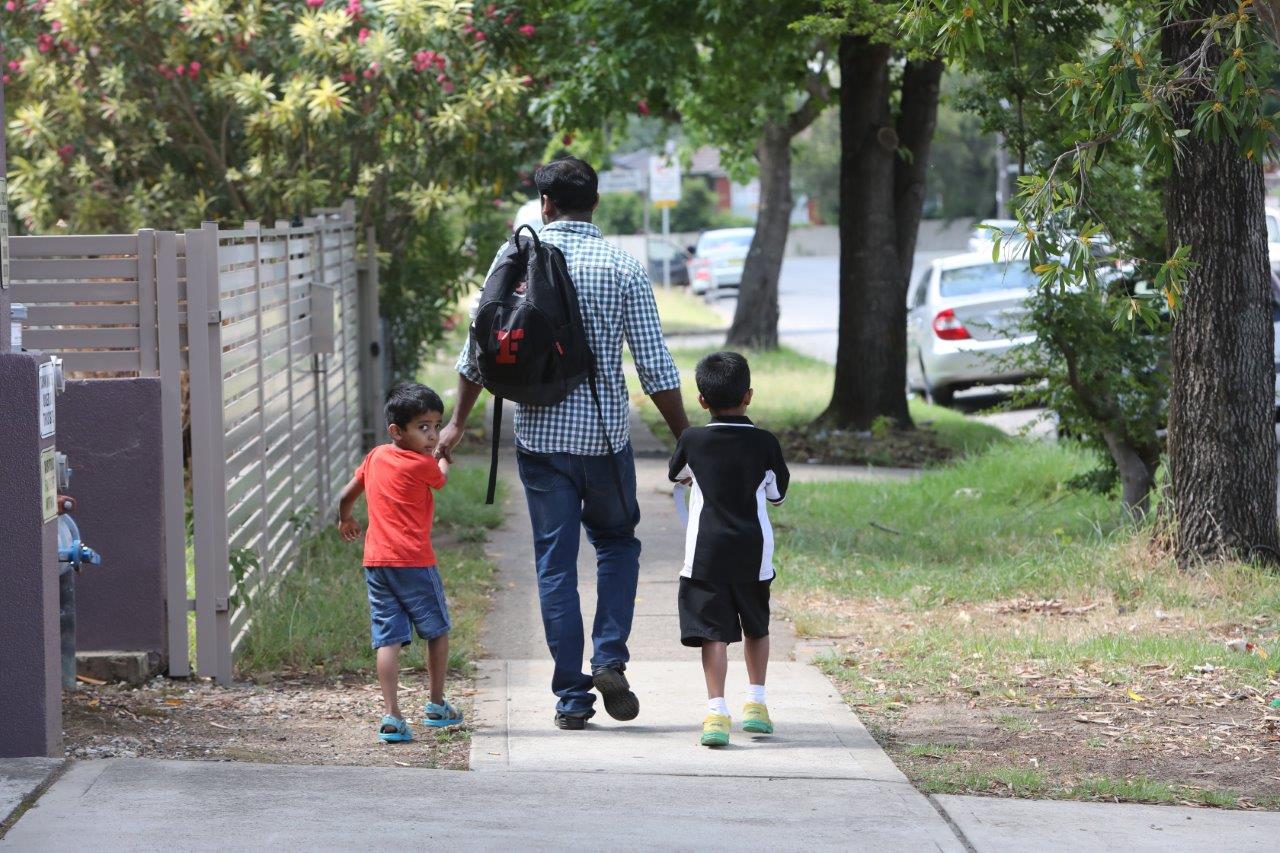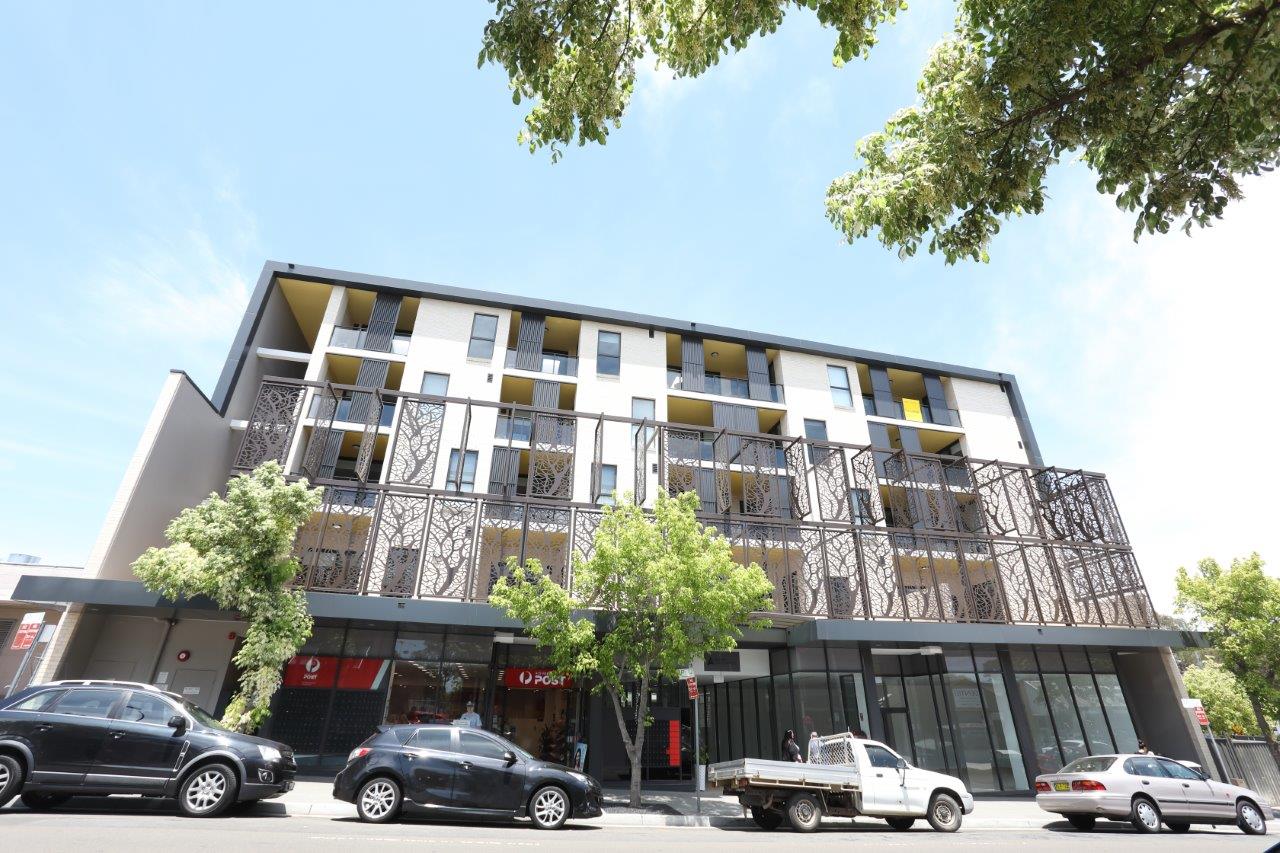Statement of Commitment
Council is working towards making Cumberland a great place for all by providing opportunities for everyone to welcome, belong and succeed.
This plan sets forward Council’s commitment to improve access to services, facilities and employment opportunities; create more liveable places and inclusive communities; recognise the rights and contributions of people with disability; and champion diversity in our community
About this Plan
Disability impacts a significant proportion of the population. Cumberland City Council strives for a community in which all people can participate and live as independently as possible.
The purpose of the Cumberland Disability Inclusion Access Plan is to ensure, as far as possible, that people with disability have full and equal access to the facilities, programs, services and information that Council provides on an equitable basis without facing discrimination or barriers.
The Disability Inclusion Act 2014 (DIA) defines disability as:
“The long-term physical, mental, intellectual or sensory impairment which in interaction with various barriers may hinder the full and effective participation in society on an equal basis with others.”
This Plan is a legislative requirement under the DIA. It provides strategies for positively shaping Council practices over the next four years to ensure greater inclusion of people with disability, their carers and families.
The Plan will also assist other members of the community who may not consider themselves as having a disability but who will benefit from improved access. These include: people with limited mobility or temporary illness or injury; older people; and parents or carers of young children, particularly those with strollers or prams.
The Plan focuses on four key areas, these key outcome areas come from the NSW Disability Inclusion Plan.
These four focus areas are:
- Developing positive community attitudes and behaviours;
- Creating liveable communities;
- Supporting access to meaningful employment;
- Improving access to mainstream services through better systems and processes.
The Cumberland Disability Inclusion Action Plan was developed in consultation with people with disability, carers, service providers, advocacy groups, and Council staff and interagency networks.
In accordance with the Disability Inclusion Act 2014 (DIA), this Plan will be lodged with the NSW Disability Council and the Australian Human Rights Commission.
Council would like to thank and acknowledge all members of the community and Council staff for their input and involvement in the development of this Plan.
Categories of Disability Explained
Intellectual
Affects a person’s abilities to learn e.g. down syndrome, fetal alcohol spectrum disorder.
Physical
Affects a person’s mobility or dexterity e.g. quadriplegic, amputee, cerebral palsy.
Development and Learning Disability
Affects a person’s ability to complete a task or use certain skills e.g. autism, dyslexia.
Neurological
Affects the person’s brain and central nervous system e.g. acquired brain injury, epilepsy, dementia, multiple sclerosis, parkinson’s disease.
Mental Illness
Affects a person’s thinking processes e.g. anxiety, depression, post traumatic stress disorder.
Sensory
Affects a person’s ability to hear or see e.g. hearing or vision impaired.
Community Profile
About Cumberland
Cumberland City Council has a population estimate of 235,439.
Cumberland is one of the most culturally and linguistically diverse local government areas in Australia:
- 60.3% or 112,749 people were born overseas.
- 30,860 people arrived in Australia with the 5 years prior to 2021.
- 73.9% of residents speak a language other than English.
Cumberland has the highest proportion of refugees per capita and the highest number of people seeking asylum of any local government authority in NSW2. In the past 25 years, more than 20,000 refugees have decided to call the Cumberland area home3.
1. Australian Bureau of Statistics (2021), Census of Population and Housing 2021.
2. Department of Immigration and Border Protection (June 2016), Illegal Maritime Arrivals on Bridging Visa E.
3. Department of Social Services (July 2016), Settlement Database www.data.gov.au/dataset/settlement-reports
The top 5 countries of birth in Cumberland (other than Australia)*
- India 8.5%
- China 6.6 %
- Lebanon 4.8%
- Nepal 4.3%
- Afghanistan 2.6%
The top 5 languages spoken in Cumberland (other than Australia)*
- Arabic 14.1%
- Mandarin 6.7%
- Nepali 4.4%
- Cantonese 4%
- Tamil 3.3%
*Source: ABS, Census 2021.
Snapshot of people with disability in Australia
People with disability are a diverse group of people. They include people who were born with disability and those who acquire disability during their life through accident, ageing or illness. The type of disability and the way it impacts on a person’s life can be variable. A person may also be affected by more than one form of disability.
- In 2018 there were 17.7% or 4.4 million Australians with disability
- 45% of the population will experience a mental health condition during their lifetime
- 1 in 6 Australians are affected by hearing loss. There are approximately 30,000 Deaf Auslan users with total hearing loss.
- Research shows job or financial loss can increase a person’s risk of health problems, such as depression and anxiety.
- 3 million Australians live with depression or anxiety.
- Vision Australia estimates there are currently 357,000 people in Australia who are blind or have low vision. They project that the number of Australians who are blind or have low vision will grow to 564,000 by 2030.
People with Disability living in Cumberland
Disability statistics don’t tell the full story as the definition of disability is limited and many Council residents are reluctant to share disability information in the Census.
It should also be noted that community consultations have highlighted that the term ‘disability’ does not have a universally understood definition with the word not even existing in many cultures and languages. Attitudes towards people with disability are also a significant barrier which impact on the availability of accurate data.
14,036 people or 5.96% of the population in Cumberland report needing help in their day-to-day lives.
This includes people whose disability causes severe core activity limitation (i.e. people who require help or assistance in one or more of the three core activity areas; self-care, mobility and communication because of a disability, long-term health condition or old age.4
More than 7,000 people in Cumberland receive a Disability Support Pension.5
This includes people over 16 years who have a physical, intellectual, or psychiatric condition that prevents them from working or who are permanently blind.
Cumberland City Council also currently supports 93 adults with disability in the Age and Disability service area.
It is widely recognised that as people age, their experience of disability increases, particularly in the area of mobility and physical disability. As Cumberland’s population ages, together with its increased longevity, the rate of disability is also expected to increase substantially over time.
Cumberland City Council - Need for assistance 2022
| Five year age groups (years) | Number |
|---|---|
| 0 to 4 | 230 |
| 5 to 14 | 845 |
| 15 to 19 | 317 |
| 20 to 24 | 266 |
| 25 to 34 | 556 |
| 35 to 44 | 763 |
| 45 to 54 | 1,282 |
| 55 to 64 | 2,108 |
| 65 to 74 | 2,791 |
| 80 to 84 | 2,961 |
| 85 and over | 1,909 |
| Total persons | 12,502 |
Unpaid Carers
Unpaid carers are the main providers of assistance to people with disability.
Research has identified that carers and families of people with disability experience high rates of mental health problems, poorer physical health, employment restrictions, financial hardship and relationship breakdown.6
18,093 Cumberland residents over the age of 15 provide unpaid care to a person with disability, with long-term illness, or due to old age.6
Assistance with Core Activities
| Ward | Percentage | Number of People |
|---|---|---|
| Wentworthville Ward | 5.7% | 2,334 |
| Granville Ward | 6% | 2,720 |
| Regents Park Ward | 4.7% | 2,293 |
| South Granville Ward | 7% | 3,088 |
| Greystanes Ward | 5.6% | 2,105 |
Number and % of the population per ward who need assistance
The Plan in Context
The Disability Discrimination Act (1992) makes it unlawful to discriminate in the provision of goods, services or facilities against people on the basis that they have or may have a disability.
National and Legislative Context
In 2008, all levels of Government across Australia committed to implementing the United Nations Convention on the Rights of Persons with Disabilities (CRPD) through the development of the National Disability Strategy (NDS). This Strategy sets out a national, unified approach to improving the lives of people with disability, their families and carers.
The National Disability Insurance Scheme (NDIS) and NSW Disability Inclusion Act 2014 (DIA) were introduced in NSW to provide greater individual choice and control for people with disability.
Council and the NSW Disability Inclusion Act
The NSW Disability Inclusion Act 2014 (DIA) recognises that disability results from barriers in society that prevent or limit inclusion. The DIA reinforces Council’s general obligation to reduce barriers for people with disability.
The DIA recognises that people with disabilities have a right to participate as fully as possible in the life of the community. Under the DIA, Council has an obligation to make its facilities and services accessible and inclusive.
Section 12 (3) of the NSW Disability Inclusion Act 2014 requires each government agency to prepare a Disability Inclusion Action Plan. The purpose of the Disability Inclusion Action Plan is to set out a series of principles and strategies to guide Council’s actions over the next four years and to empower people with disability to have greater access to Council facilities, services and information.
Alignment with Council’s Community Strategic Plan
The Disability Inclusion Action Plan aligns with Cumberland Council ‘s Strategic Plan 2017 – 2027 which identifies ‘safety and access’ as key community priorities including the need for improved equality in access of, and to, services and facilities in the area.
Implementation of this Plan is a specific action identified in Council’s Delivery Program and Operational Plan 2022 – 2023. This ensures that the needs of people with disability will be considered in all aspects of Cumberland’s infrastructure, resources and services. The Plan will be monitored and implemented as part of Council’s integrated planning and reporting framework.
Community Engagement
How we engaged the community
The Disability Inclusion Action Plan was developed by listening to and engaging with residents, external stakeholders and staff over many months throughout 2019-2022. More than 3,337 people from across Cumberland provided feedback by filling in a survey, completing a telephone survey, attending a forum or focus group to provide input into the development of the Plan.
Community Satisfaction Survey
A telephone survey was conducted by Micromex Research in September 2019 to examine community attitudes and perceptions towards Council’s current and future services and facilities. This survey contained two questions that gave insight into how Council was performing against access and inclusion indicators.
602 Residents Participated
Easy Read Survey About Disability
An ‘Easy Read Survey about Disability’ was undertaken with service providers, people with disability, their carers, families, staff and the general public between February 2022 and March 2022. 45% of respondents to the survey were people with disability and 39% were carers of a person with disability.
21 Surveys Completed
Focus Groups
Three focus groups were undertaken with people with disability, their carers and families, schools, local disability service providers and Council staff.
109 Participants
Community Strategic Plan Survey
Council undertook a comprehensive engagement program to identify the priorities, challenges and vision that people of Cumberland had for their city over the next 10 years. Additional questions around community awareness/attitudes of people with disability and priority access issues were included to inform the DIAP.
2,500 Responses were received
Consultation with Council Staff
An internal consultation session was held with representatives from across Council in March 2022 to inform Council’s proposed action plan.
105 Staff consulted
What the Community told us
The following key findings and recommendations were identified through the community engagement process.
Liveable Communities
Footpaths and access to smaller shops and buildings were identified as some of the greatest barriers to mobility in the Cumberland area. Education about disability for the community and information about accessible services was also considered a key driver to enhancing liveability within the community.
- Accessible Information — The need to provide information in accessible formats was identified, this can include but is not limited to translated materials, braille signage and utilisation of accessibility functions.
- Accessible Parking & Shops — The need for additional accessible parking spaces across Cumberland was identified, as well as improving access to shops, particularly those smaller in size.
- Access Committee — It was acknowledged that Council’s access committee provided community members an effective mechanism to raise concerns and provide suggestions to Council on topics related to the liveability of the Cumberland Community for people with disability.
- Expanded Council Facilities and Programs — The variety of activities, venues, parks and community centres provided by Council were highly valued by the community. Greater promotion and provision of inclusive and accessible Council programs, services and facilities were identified as a key priority to increase participation in community life. Examples include access audits and maps, partnerships with schools and sports clubs, art workshops, entrance ramps and increased community awareness.
To make our community truly liveable, Council needs to:
- Improve footpaths, ramps and accessibility of smaller shops
- Increase community awareness and education about disability and services available
- Continue to create accessible spaces and parks for families to enjoy together
- Establish improved processes for getting feedback from people with disability and their carers on different matters
- Continue to address accessibility of Council buildings and facilities
Attitudes and Behaviours
Over half of respondents surveyed felt that people in Cumberland are friendly or helpful to people with disability. However, there is also a general lack of understanding around the term ‘disability’ and the diversity and different types of disability that exist. The need to educate the community about less visible disabilities, including mental illness and to challenge negative stereotypes was highlighted as well as the importance of separating ‘disability’ and ‘ageing’ issues.
Specific suggestions were made in relation to people wanting to know more of the positive stories for people with lived experience of disability in the community.
To shape positive attitudes and behaviours towards people with disability, Council needs to:
- Prioritise projects that involve people with lived experience of disability
- Co-design exhibitions with community members with disability
- Enhance community awareness through sharing of positive outcomes for people with disability and promotion of available services and programs
- Training and upskilling of staff, contractors and community leaders in the area of disability awareness
Systems and Processes
Consultations identified the need to improve the accessibility and provision of Council information and news including targeted communication to people with disability. This includes greater diversity of information provision such as increased language translations, providing easy read formats, larger print, resources interpreted in braille and recorded audio formats.
Accessible Information - The need to provide greater access to information to enable people with disability to participate in Council programs, events and services was identified. Participants felt there was many missed opportunities as a result of not being aware of what is available.
To shape positive attitudes and behaviours towards people with disability, Council needs to:
- Review and adapt feedback channels for people to raise issues and share ideas
- Provide opportunities for Council to connect with the community and understand their needs
- Implement procedures to govern accessibility through processes
- Enhance access to information by embedding accessibility in communications and marketing using different formats
Employment
Gaining meaningful employment greatly contributes to a person’s sense of self-worth, opportunities for social interaction and independence. Consultations highlighted a need for training, mentoring, volunteering and support programs as a pathway to meaningful employment for people with disability.
There is potential for Council to explore further partnerships with businesses to provide training and support to increase local employment and volunteer opportunities for people with disability.
To make Cumberland a great place to work for people with disability, Council needs to:
- Provide training, mentoring, volunteering and support programs for people with disability to gain meaningful employment;
- Identify opportunities to partner with local businesses to increase local employment and volunteer opportunities for people with disability;
- Commit to continuous improvement of Council’s recruitment practices by reviewing recruitment and selection processes to remove barriers for people with disability seeking employment with Council.
Action Plan
Focus Area 1 - Positive Attitudes and Behaviours
Council encourages positive and inclusive staff behaviours, and a whole of community attitude to people with a disability. We champion behaviour that respects and embraces diversity and difference within our community.
Strategy 1.1
Improve capacity of Council staff to identify, understand and deliver inclusive practices.
Action
- Undertake a review of the level of understanding and specific training needs required by staff across the organisation.
- Provide disability awareness induction, training and support programs for staff and volunteers including annual disability awareness training for existing staff and volunteers.
- Incorporate disability awareness information into the Councillor Induction and Training Program for newly elected representatives.
- Continually review, improve and deliver Council’s community engagement framework to ensure participation by people with disability and their carers in all public participation programs including the development and delivery of Council plans and strategies.
- Annually deliver a professional development program for education and care and frontline staff to meet the needs of children and families with disability.
- Regularly promote Council’s Engaging Translators and Interpreter Guidelines and the Relay Service available to staff to promote awareness and use of these services.
- Assign a staff Disability Champion within Cumberland City Council to develop and implement an Inclusion Committee within Council made up of employees across departments and oversee the DIAP implementation.
Strategy 1.2
Continue to develop partnerships which promote and raise awareness of inclusive practices.
Action
- Convene the Cumberland Access Committee and promote awareness amongst staff, volunteers and residents
- Continue to work with key community organisations, advocacy groups and government agencies and deliver initiatives to promote access and inclusion.
- Support businesses and community organisations to implement and promote inclusive practices through membership with the Zero Barriers project.
- Support Council’s access and inclusion objectives through the procurement and tendering process including asking suppliers and partners about their commitment and practices with regards to access and inclusion.
- Provide accessibility support in the rollout of the Cumberland City Council community grants program
Strategy 1.3
Demonstrate leadership in inclusive and accessible communication and publications.
Action
- Developing Council publications reflective of our diverse community e.g. images of people with disability in Council publications and promotional material.
- Increase the delivery of public campaigns and activities that highlight inclusion and recognise the rights and contribution of people with disability in our community in Council’s publications all year round focusing on both physical and non-physical
- Develop education initiatives to improve community awareness of the impact of behaviours which impede public access. For example, communication which highlights the impact of obstructing pathways or driveways to people with disability.
Key Highlights
In 2021 Council opened the newly renovated Wentworthville Memorial Swim Centre. The Centre offers a new warm program pool, a leisure pool with beach entry and new change rooms. A lift has also been installed to allow people with disability to use the 50-metre pool.
Council engaged with a Commonwealth Disability Employment Service, Job Support, who provided placements for people with disability. The people in these placements assisted with cleaning duties at the Merrylands Administration Office during the COVID period in 2020, to ensure compliance with Council’s COVID Safety Plan.
Artist Emily Crockford was engaged to paint the new mural at the Granville Park Sports Pavilion called ‘Stadium Pop: Football Flowers.’
Council hosted an International Day of People with Disability event, which included the showing of short films available through the Wide-Angle Film Festival to staff, providing staff training, promoting the accessible resources available through our libraries, and organising Rae Anderson, an Australian summer Paralympian in track and field to do a presentation at Holy Trinity Primary School about her story and then afterwards held a practical clinic with 55 year 5 and 6 children.
Focus Area 2 - Liveable Communities
Council contributes to and advocates for a liveable and welcoming Cumberland, where community places, neighbourhoods and facilities promote health, happiness and wellbeing and contribute to social connectedness. This includes important liveability factors such as housing design, transport access, community recreation, universal design and social inclusiveness.
3 Swim Centres with lifts and pool hoists
Auburn, Guildford and Merrylands swimming pools have lifts and pool hoists available for use to access pools within the centres.
38,310 Hours of Social Inclusion
From 2019-2021 Cumberland City Council provided Social Inclusion to Individuals and Groups through programs.
Strategy 2.1
Increase access to public places and facilities.
Action
- Undertake an audit of accessible public toilets across Cumberland to evaluate the accessibility of each toilet, including their access.
- Undertake an audit and develop a priority plan to increase the number and distribution of accessible parking spaces across Cumberland and develop an accessible online map.
- Review current planning control for access to buildings Class 2-6 and develop a new Access & Mobility Development Control Plan (DCP). The DCP meets and exceeds the access standards set out in the Disability (Access to Premises — Buildings) Standards 2010
- Identify priority locations to undertake pedestrian access and mobility plans to inform accessible paths of travel between major facilities and services.
- Develop and implement a Cumberland Pedestrian Access Mobility Plan (PAMP) and ensure all new road and transport infrastructure works undertaken by Council are coordinated and in accordance with current legislation.
- Prepare and implement a Cumberland wide Pedestrian Access and Mobility Plan including an Audit of bus stops to meet Disability Discrimination Act (DDA) requirements.
- Investigate the options for an interactive map of the Cumberland LGA that provides information on access features e.g. toilets, building access, play equipment, quiet zones.
- Continuously upgrade recreational facilities (playgrounds, sports fields, golf courses, amenities, parks, etc) to incorporate access and inclusion provisions and to meet the requirements of the Disability Discrimination Act and the relevant Australian Building and Construction Codes.
- Undertake an audit of Council aquatic centres and develop a priority plan to incorporate access and inclusion provisions in priority locations and ensure compliance with accessibility standards.
- Undertake access appraisals of the Central Gardens, Holroyd Gardens and Auburn Botanic Gardens and promote as destinations for people with disability.
- Incorporate accessible play elements when renewing and installing playgrounds.
- Advocate for accessible public transport hubs and infrastructure.
- Continue to provide accessible transport to enable participation in Council programs, services and events.
Strategy 2.2
Provide programs which aim to increase social inclusion, participation and community connections.
Action
- Promote and support inclusion in all activities delivered by Council in community centres, youth centres, arts facilities and libraries.
- Provide, resource and support education and care service for families with children with disability.
- Operate quality and specialised services for people with disability that reflect the needs and requirements of people with disability.
Focus Area 3 - Employment
Council maintains its commitment to equal employment and workplace opportunities and the ongoing commitment to reducing barriers for current and future employees to remain and thrive in the workplace.
- 1.04% of Cumberland Council’s workforce have identified as having disability
- 30% of respondents are aware that their organisation employs a colleague with a disability.10
- 66% of organisations who employ people with disability identify positive benefits including improved morale, improved skill set, greater customer satisfaction and improved productivity.10
- Of these, 7/10 would prefer to be an employee while the remaining 3 would prefer self-employment. 11
10. Source: Disability Confidence Survey Report 2017, Australian Network on Disability
11. Disability & Career Advice Survey, Australian Government Department of Social Services & Year 13, January 2021, viewed 6 April, 2022
Strategy 4.1
Increase access to Council information and services
Action
- Provide information in a range of accessible formats and ensure that Council’s website, print material and social media is accessible. Implement the use of QR codes to improve accessibility.
- Ensure Council’s website is compliant with Web Content Accessibility Guidelines 2.1AA to ensure minimum standards of accessibility requirements (vision and hearing impaired).
- Develop a range of publications to promote accessible places and spaces within the Local Government Authority.
- Create a DIAP section on Council’s external website to share news, updates and actions. Include content from Council as well as from the community.
- Develop and install signage to promote accessibility within Council’s facilities for example hearing loop, braille tactile signs, Master Locksmiths Access key (MLAK) key access and include information about Council’s accessibility features and services on Council’s website.
- Include guidance on inclusive communication in Cumberland City Council’s style guides and writing guides. Make guides available for all staff.
Strategy 4.2
Review and continuously improve Council’s service delivery
- Undertake regular, independent reviews of Council’s services and systems to identify barriers to access for people with disability.
- Undertake regular internal review of Council’s systems and processes to identify barriers for people with disability.
- Promote Council’s DIAP outcomes to the community, ensuring use of a range of communication methods and accessible formats.
- Include Disability Inclusion Action Plan items in business plans for each department.
Strategy 4.3
Develop and implement staff procedures and practices that support the implementation of access and inclusion.
Action
- Implement guidelines for making Council’s publications and signage accessible, including ‘Easy Read’ publication.
- Develop an accessibility checklist for staff developing content for Council’s website. how to use accessible technologies.
- Develop and implement training for staff to deliver better access outcomes, for example, Develop and implement accessible event management guidelines and toolkit for Council delivered events to promote access and inclusion.
- Develop and implement training for staff delivering community engagement programs to promote access and inclusion.
- Support staff with disability to attend training and professional development opportunities.
- Add DIAP action items to Council’s formal reporting system allocating to specific departments within Council to provide feedback and updates
Monitoring and Evaluation
Implementation of the Disability Inclusion Action Plan is incorporated into Council’s Delivery Program and Operational Plan with accompanying responsibilities, resources and timeframes identified.
Ongoing monitoring and evaluation of the Plan is to be overseen by the Cumberland Access Committee comprising of community and stakeholder representatives.
Council will report on progress of the Plan as part of the Cumberland Council Annual Report and will also provide a summary of its achievements to the Disability Council NSW.
A comprehensive review and evaluation of the Plan will be undertaken at the completion of the four year term (2022 - 2026). The results will be reported to Council, the NSW Disability Council and Australian Human Rights Commission as well as the Cumberland community.
Performance Indicators
Indicators are an important tool in ascertaining the progress in implementing the DIAP as well as maintaining the profile and commitment to disability inclusion within Council.
The challenge for Council is that issues may be important and have a significant impact on people with disability but be outside the direct control of Council. Council will monitor progress against these indicators to measure the wellbeing and inclusion of people with disability in the community.
Spheres of Council Infuence11
Focus Area - Positive Attitudes and Behaviours
| Indicators | Date Source | Council Influence |
|---|---|---|
| Agreement that Cumberland is a harmonious, respectful and tolerant community | Community Satisfaction Survey | Influence |
| Level of satisfaction with opportunities to participate in Council’s decision making process | Community Satisfaction Survey | Control |
| Number of Council staff and volunteers who have participated in disability awareness training | Council data | Control |
| Satisfaction reported by people with disability on the outcomes of their participation | DIAP panel | Influence |
Focus Area - Liveable Communities
| Indicators | Data | Source |
|---|---|---|
| Agreement that Cumberland is a good place to live | Community Satisfaction Survey | Influence |
| Level of satisfaction with access to arts and cultural activities | Community Satisfaction Survey | Control |
| Level of satisfaction with access to sporting or recreation activities | Community Satisfaction Survey | Control |
| Agreement that transport in the area is accessible | Community Satisfaction Survey | Control |
| Number of accessible car parking spaces in Cumberland | Council data | Influence |
| Number of new or upgraded accessible public toilets in Cumberland | Council data | Control |
| Level of satisfaction with aged care and support for people with disability | Community Satisfaction Survey | Influence |
Focus Area - Employment
| Indicators | Data Source | Council Influence |
|---|---|---|
| Proportion of employees with disability in Council’s workforce | Council data | Influence |
| Number of new volunteer placements from people with a disability | Council data | Influence |
Focus Area - System and Processes
| Indicators | Data Source | Council Influence |
|---|---|---|
| Level of satisfaction with transport options for Council events | Council data | Control |
| Level of satisfaction with provision of Council information to the community | Community Satisfaction Survey | Control |
| Level of satisfaction with accessibility to Council and its services | Community Satisfaction Survey | Control |
| Proportion of Council publications provided in accessible formats | Council data | Control |
| Number of Council publications produced which promote accessible places and spaces in Cumberland | Council data | Control |




